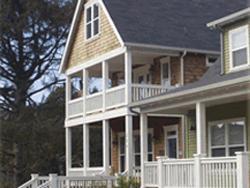More than Half of U.S. Homes Have Lost Value in the Past Year
Seattle, WA November 17, 2025-Home values are falling for more than half of U.S. households. New research from Zillow shows 53% of all U.S. homes have lost value since last year-the highest share since 2012, the tail end of home value declines after the Great Recession.
Metros with the largest share of homes that lost value over the year are concentrated across the West and South.
But the vast majority of homeowners have seen their home values rise substantially in the time they've owned them-67% growth at the median-and losses are rare; just over 4% of homes have lost value since they were last sold, a smaller share than before the pandemic.
National home value appreciation has been flat over the past year, but that average hides peaks and valleys by region, metro, neighborhood and all the way down to the individual property. As of October, 53% of homes have lost value over the past year as measured by their Zestimate from Zillow. This share has climbed from just 14% a year ago, and is the highest share of homes declining in value since April 2012, when the housing crash was reaching its bottom.
"Homeowners may feel rattled when they see their Zestimate drop, and it's more common in today's cooler market environment than in recent years. But relatively few are selling at a loss," said Treh Manhertz, senior economic researcher at Zillow. "Home values surged over the past six years, and the vast majority of homeowners still have significant equity. What we're seeing now is a normalization, not a crash."
The vast majority of homeowners have plenty to feel good about. Nationwide, the median home value increase since last sale-roughly eight and a half years ago at the median-is 67%. Some fast-growing and supply-constrained metros have seen home values rise much faster since last sale, led by Buffalo (108%), San Jose (97%), Providence (95%), Columbus (90%) and San Diego (88%). One contributing factor is that owners in these areas tend to stay in their homes longer than average.
Still, home value declines can be scary. For most homeowners, their house is their largest asset, and equity built over time is a major part of their long-term saving and retirement plans. Part of financial planning for many includes tracking the value of their home by regularly checking their Zestimate. Seeing that Zestimate hit a peak and then decline can be worrisome.
Most homes have lost value from their peak, with the average drawdown at 9.7%; that hasn't worsened substantially over the past three years. It is a larger setback than the tiny 3.6% in spring 2022, but about level with pre-pandemic rates, and a far cry from the 27% average drawdown in early 2012.
However, what really matters is gaining value (or losing it) between sales. In October, 4.1% of homes were valued lower than when they last sold. This share is up from 2.4% last year but is still lower than the 11.2% of homes in the same position before the pandemic.
The continued lack of homes for sale indicates that the overwhelming majority of sellers are not being forced to sell at a discount. Only 3.4% of new listings coming to market are priced below their last sale price. That's up slightly from 2.1% a year ago but is still just over half the 2019 rate of 5.9%.
Metros that saw some of the fastest growth early in the pandemic and the two most expensive metros have the largest share of listings priced below their last sale, led by San Francisco (14%), Austin (13%), San Jose (9%), San Antonio (8%) and Dallas (7%).
Providence, Milwaukee and Cincinnati all have less than 1% of new listings priced below their last sale, while 13 other metros across the Northeast, Great Lakes region, South and Midwest have less than 2%.
